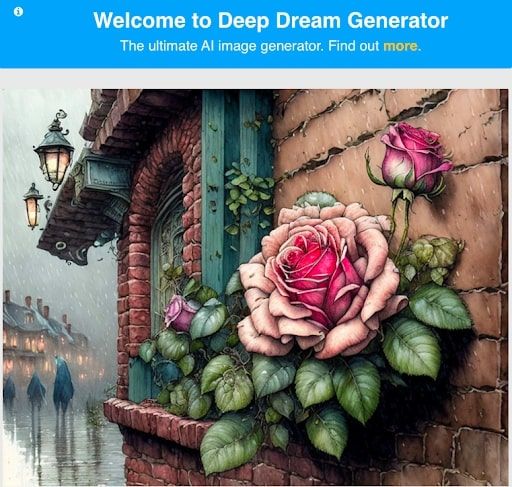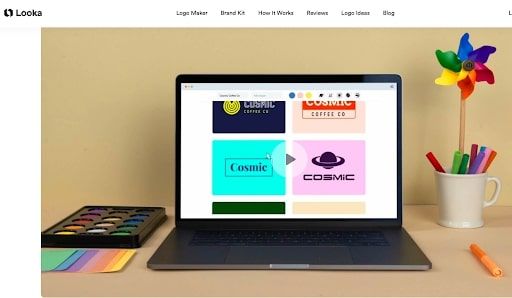Introduction: The AI Revolution
Imagine the landscape of design altered forever, where tedious tasks become swift, collaboration knows no boundaries, and creativity receives an unprecedented boost.
This isn't a utopian dream; it's the reality of today's design world, reshaped by the transformative power of artificial intelligence (AI). This exploration examines how AI streamlines design processes, enhances team synergy and invigorates creativity.

The Dawn of Artificial Intelligence in Design: An Overview
AI is not a sudden phenomenon; it has gradually woven its way into the fabric of the design world. As this technology continues to advance, its applications within design are expanding, opening new pathways for innovation and efficiency. AI substantially impacts how designers work and create, from automation to collaboration and personalization to simplification.
AI: Taking the Helm of Tedious Tasks
Every designer knows the frustration of being bogged down by repetitive, time-consuming tasks. Thankfully, AI is here to take the wheel, offering intelligent solutions to automate mundane tasks and giving designers more time to focus on the creative aspects of their work.
Adobe Sensei, an incredible feature integrated into Adobe's Creative Cloud suite, revolutionizes the design process.
- Automating tasks such as asset selection and image masking becomes a time-saving powerhouse for designers.
- With seamless integration, it empowers designers with a robust AI toolset, enhancing their productivity and enabling them to dedicate more energy to crafting captivating designs.
Bridging Distances: AI in Global Collaboration
In an age where remote work is becoming the norm, AI proves instrumental in enabling seamless collaboration. AI-powered tools such as Figma and Conceptboard are proving invaluable to teams scattered across the globe. These platforms facilitate real-time brainstorming, co-creation, and feedback, effectively bridging geographical distances and time zones.
The outcome? More unified, efficient, and practical design teams working in sync, creating better products faster.

Catalyzing Creativity: AI's Role in Artistic Expression
One of the most remarkable facets of AI is its potential to catalyze creativity. AI is no longer just a tool; it's evolving into a collaborative partner that can provide creative inspiration and generate ideas.
Google's Deep Dream: This tool utilizes AI to transform ordinary images into extraordinary, dream-like visuals.
- Boundless artistic expression: Deep Dream opens up a new realm for designers to push boundaries and unleash creativity.
- Innovative design opportunities: Deep Dream represents a novel frontier in design, inspiring designers to explore and innovate in unprecedented ways.

Crafting Visual Narratives: The Power of Personalization
In an era defined by personalization, AI holds the power to curate tailored designs that resonate with users on a deeper level. Looka, an AI-based platform, exemplifies this trend. By creating custom logos based on user input, Looka distils a brand's essence into a visually compelling symbol within minutes.
Through such personalization, AI is democratizing design, making it accessible to a broader audience. And the impact is felt not just by professional designers but also by non-designers who want to take a stab at creating their own unique visuals.

From Sketch to Screen: AI Speeding up the Design Process
Hand-drawn sketches converted into digital prototypes form a vital part of the design process. However, this conversion often proves to be labour-intensive. Here, AI proves its worth with tools like Uizard, which rapidly transform hand-drawn sketches into digital designs.
By accelerating this essential step, AI frees up designers' time, allowing them to focus on enhancing the user experience and refining their designs.
Wondering how illuminz harnesses AI tools for designing wireframes and its pivotal role in streamlining development processes? Join us on our podcast as Terry and Sanchit delve into the extensive applications of AI.

Solving Complexity: AI as the Master Simplifier
AI is a master at solving complex design tasks. Consider removing backgrounds, an AI tool adept at swiftly and precisely removing image backgrounds. By automating this intricate process, AI saves designers countless hours, letting them invest more time perfecting their designs.

Conclusion: A New Era of Design
AI is revolutionizing the design landscape. By automating routine tasks, fostering global collaboration, stimulating creativity, and personalizing designs, AI is shaping a new era in design—an era defined by efficiency, synergy, innovation, and accessibility. It's an exciting time to be a designer with AI by your side, amplifying your creative powers and taking your designs to a whole new level.
With AI's continued advancement, the question is no longer whether AI will redefine design but how far and deep this transformation will go. Embrace AI as your ally in design; harness its potential to create, innovate, and inspire. Remember, in the design world, AI is more than a mere tool—it's a game-changer.
Frequently Asked Questions on AI In Design
Q.1 How can AI be used in design?
Q.1 How can AI be used in design?
Ans: AI can play a valuable role in design by unleashing creativity and boosting productivity. It can generate fresh design ideas and concepts considering user preferences and existing structures. By analyzing vast amounts of data, AI algorithms can identify patterns, trends, and user preferences, empowering designers to make informed decisions. AI also excels at automating repetitive design tasks like creating layouts or selecting colors. Moreover, it can aid in evaluating designs by predicting user responses and conducting A/B testing, allowing designers to optimize their choices.
Q.2 How can we tackle the risks inherent in designing, developing, and deploying AI in such a way as to maximize the benefits and minimize the harm?
Ans: To maximize benefits and minimize harm in designing, developing, and deploying AI, we should implement ethical frameworks, ensure robust data governance, foster responsible AI development, conduct rigorous testing, monitor continuously, empower users, establish regulations, and promote lifelong learning.
These measures prioritize fairness, transparency, accountability, and user inclusion while addressing biases and risks. By doing so, we can harness AI's potential while safeguarding against negative impacts and ensuring that AI aligns with human values.
Q.3 What is the future of Ai in design?
Ans: The future of AI in design is auspicious and holds exciting possibilities. We can expect AI to revolutionize the design industry by unlocking new levels of creativity and efficiency. Designers will have access to powerful AI tools that generate innovative ideas, automate mundane tasks, and provide valuable insights from vast amounts of data.
AI algorithms will better understand individual preferences, allowing for highly personalized and intuitive design experiences. With AI-driven predictive analytics, designers will make informed decisions and anticipate user responses. Integrating AI in design will empower designers and push the boundaries of innovation to new heights.

